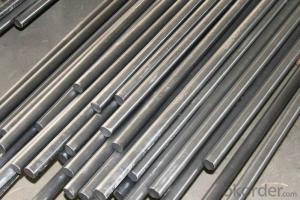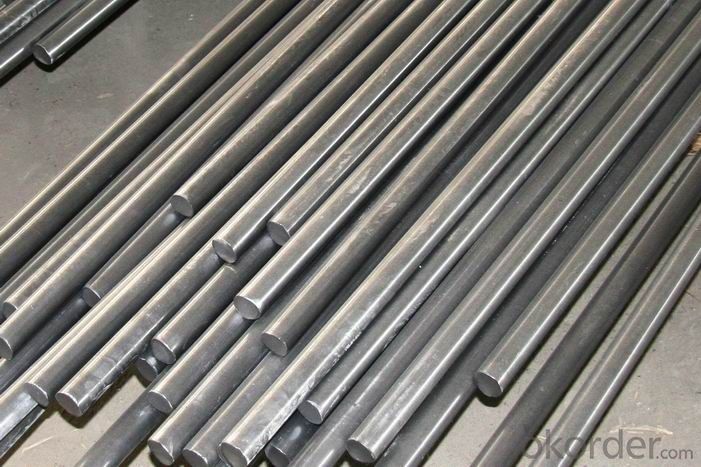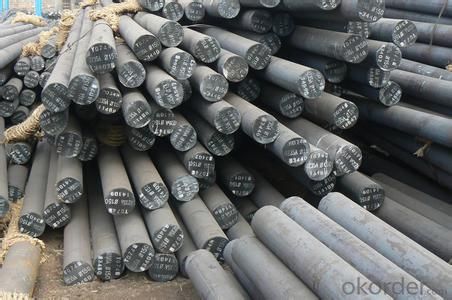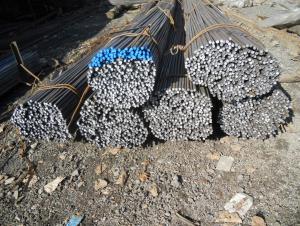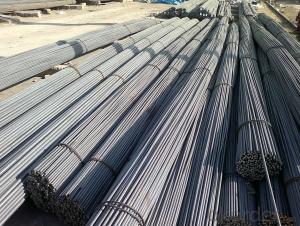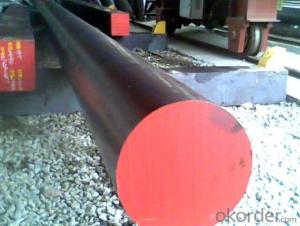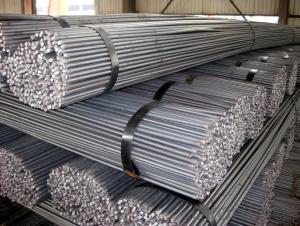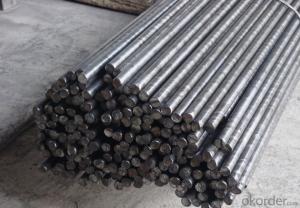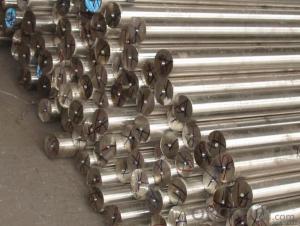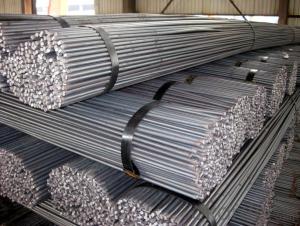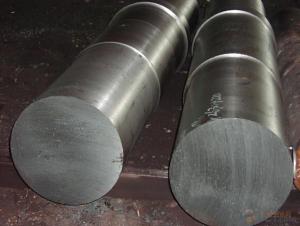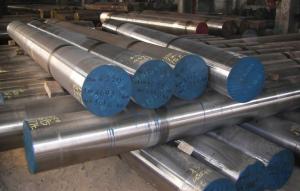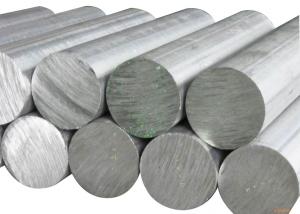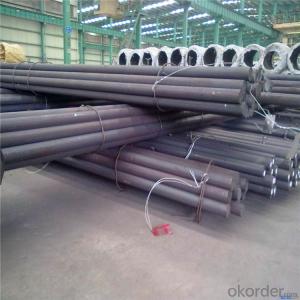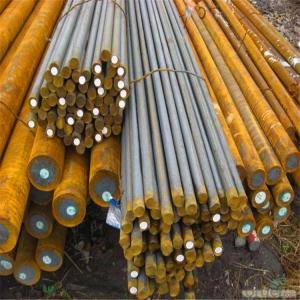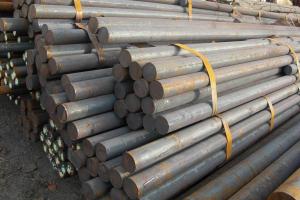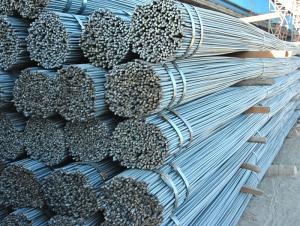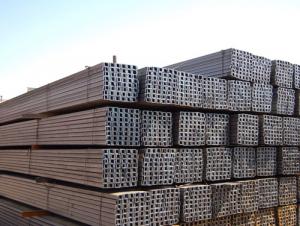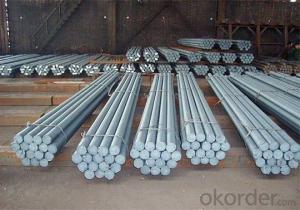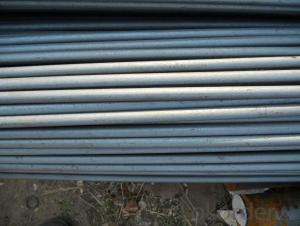Round Bar For Bearing G20
- Loading Port:
- China Main Port
- Payment Terms:
- TT or LC
- Min Order Qty:
- -
- Supply Capability:
- -
OKorder Service Pledge
OKorder Financial Service
You Might Also Like
Product Description:
OKorder is offering high quality Hot Rolled Steel I-Beams at great prices with worldwide shipping. Our supplier is a world-class manufacturer of steel, with our products utilized the world over. OKorder annually supplies products to European, North American and Asian markets. We provide quotations within 24 hours of receiving an inquiry and guarantee competitive prices.
Product Applications:
Hot Rolled Steel I-Beams are ideal for structural applications and are widely used in the construction of buildings and bridges, and the manufacturing, petrochemical, and transportation industries.
Product Advantages:
OKorder's Steel I-Beams are durable, strong, and resist corrosion.
Main Product Features:
· Premium quality
· Prompt delivery & seaworthy packing (30 days after receiving deposit)
· Corrosion resistance
· Can be recycled and reused
· Mill test certification
· Professional Service
· Competitive pricing
Product Specifications:
Manufacture: Hot rolled
Grade: Q195 – 235
Certificates: ISO, SGS, BV, CIQ
Length: 6m – 12m, as per customer request
Specifications of Special Steel:
Grade | bearing steel EN-31 |
Dimensions | Diameter: 20-280mm Length: 2000-5800mm |
Shape | Round Bar |
Type | High chromium bearing steel |
HBS | <220 |
Standard | AISI |
Technique | Hot Rolled |
FAQ:
Q1: Why buy Materials & Equipment from OKorder.com?
A1: All products offered byOKorder.com are carefully selected from China's most reliable manufacturing enterprises. Through its ISO certifications, OKorder.com adheres to the highest standards and a commitment to supply chain safety and customer satisfaction.
Q2: How do we guarantee the quality of our products?
A2: We have established an advanced quality management system which conducts strict quality tests at every step, from raw materials to the final product. At the same time, we provide extensive follow-up service assurances as required.
Q3: How soon can we receive the product after purchase?
A3: Within three days of placing an order, we will begin production. The specific shipping date is dependent upon international and government factors, but is typically 7 to 10 workdays.
Q4: What makes stainless steel stainless?
A4: Stainless steel must contain at least 10.5 % chromium. It is this element that reacts with the oxygen in the air to form a complex chrome-oxide surface layer that is invisible but strong enough to prevent further oxygen from "staining" (rusting) the surface. Higher levels of chromium and the addition of other alloying elements such as nickel and molybdenum enhance this surface layer and improve the corrosion resistance of the stainless material.
Q5: Can stainless steel rust?
A5: Stainless does not "rust" as you think of regular steel rusting with a red oxide on the surface that flakes off. If you see red rust it is probably due to some iron particles that have contaminated the surface of the stainless steel and it is these iron particles that are rusting. Look at the source of the rusting and see if you can remove it from the surface.
Images:
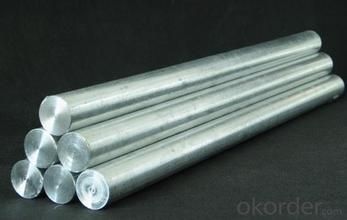
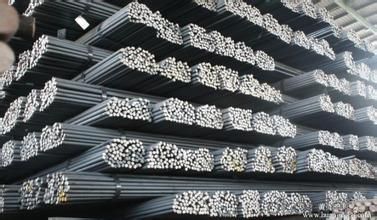
- Q: Is the shear wall concealed column stirrup steel or round steel?
- Specify the construction drawing is HPB300 is hot rolled round bar, that is HRB335, HRB400 is the hot rolled ribbed bar. Don't call thread steel, this name has long been abandoned. Simple, light marked wall column reinforcement detail construction drawing on the diameter and spacing is not encrypted, what non encrypted area, like the dense spacing.
- Q: Can steel round bars be used in the production of HVAC equipment?
- Yes, steel round bars can definitely be used in the production of HVAC (Heating, Ventilation, and Air Conditioning) equipment. Steel round bars are widely utilized in the manufacturing of various HVAC components such as air ducts, frames, supports, brackets, and other structural elements. Steel is a popular choice in HVAC equipment due to its excellent strength, durability, and resistance to corrosion. Its high tensile strength makes it suitable for handling the mechanical stresses and loads experienced by HVAC systems. Additionally, steel can withstand high temperatures and is non-combustible, making it a safe material for HVAC applications. Overall, steel round bars are widely utilized in the production of HVAC equipment for their reliability, longevity, and performance.
- Q: Can steel round bars be used for making musical instruments?
- Musical instruments can indeed be made using steel round bars. Steel is an incredibly versatile material, known for its outstanding strength and durability. This makes it highly suitable for a wide range of applications, including the creation of musical instruments. Steel round bars can be utilized in the fabrication of various musical instrument components, such as strings, rods, and even the principal body of certain instruments. The precise type and grade of steel utilized will ultimately depend on the specific instrument and the desired sound quality. For instance, steel bars are commonly employed in percussion instruments like xylophones or vibraphones, as they generate diverse pitches and tones. Furthermore, steel round bars can be employed in the production of components for wind instruments, including saxophones and trumpets. Nevertheless, it is important to note that selecting the appropriate material for musical instruments is often a complex process. Factors such as resonance, tonal quality, and playability must all be carefully considered. While steel round bars can be utilized, other materials like brass, wood, or even synthetic substances may be preferred for certain instruments in order to achieve the desired sound characteristics.
- Q: What is the typical hardness of a steel round bar?
- The typical hardness of a steel round bar can vary depending on the specific grade and composition of the steel. However, most steel round bars have a typical hardness ranging from 20 to 60 HRC (Rockwell Hardness Scale).
- Q: What is the difference between a bright and a cold finished steel round bar?
- A bright steel round bar and a cold finished steel round bar are two distinct types of steel bars that differ in their manufacturing processes and resulting characteristics. A bright steel round bar, also known as a turned or polished bar, undergoes a process called turning or polishing. During this process, the rough steel bar is rotated on a lathe machine and a cutting tool is applied to remove the outer layer of the bar, resulting in a smooth and shiny surface. This process not only enhances the appearance of the bar but also improves its dimensional accuracy and surface finish. Bright steel round bars are commonly used in applications where aesthetics and a high-quality surface finish are important, such as architectural components, decorative items, and certain automotive parts. On the other hand, a cold finished steel round bar undergoes a different manufacturing process called cold drawing or cold rolling. In this process, the hot-rolled steel bar is passed through a series of dies at room temperature, reducing its diameter and increasing its length. This cold working process gives the steel bar improved mechanical properties, such as increased tensile strength, improved yield strength, and enhanced dimensional accuracy. Cold finished steel round bars are often used in applications that require high strength and precision, such as shafts, gears, bolts, and tools. In summary, the main difference between a bright steel round bar and a cold finished steel round bar lies in their manufacturing processes and resulting characteristics. While a bright steel round bar is turned or polished to achieve a smooth and shiny surface, a cold finished steel round bar undergoes cold drawing or rolling to enhance its mechanical properties and dimensional accuracy. The choice between these two types of steel bars depends on the specific requirements of the application, such as the need for aesthetics, surface finish, strength, or precision.
- Q: What is the difference between a bright and a black steel round bar?
- The main difference between a bright and a black steel round bar lies in their appearance and surface finish. A bright steel round bar, also known as a bright drawn or turned bar, has a smooth and shiny surface. This is achieved through a process called cold drawing, where the steel bar is pulled through a die to remove any imperfections and create a uniform shape. The result is a highly polished and reflective surface that is visually appealing. On the other hand, a black steel round bar has a dark, rough, and non-reflective surface. This is because it does not undergo the same cold drawing process as a bright steel bar. The black surface is typically a result of the scale that forms on the steel during the manufacturing process, which is not removed. In terms of properties, both bright and black steel round bars are made of the same material, typically carbon steel. Therefore, their mechanical properties such as strength, hardness, and toughness are generally similar. However, the manufacturing process of the bright steel bar helps to improve its surface quality and dimensional accuracy compared to the black steel bar. Ultimately, the choice between a bright and a black steel round bar depends on the desired aesthetic appearance and the specific application requirements. Bright steel bars are commonly used in decorative applications, where a polished and visually appealing finish is desired. Black steel bars, on the other hand, are often used in structural applications, where the surface appearance is less important but strength and durability are crucial.
- Q: Can steel round bars be welded to other materials?
- Other materials can indeed be joined with steel round bars through welding. Welding is a widely used technique for merging various materials, including steel round bars, aluminum, stainless steel, and even non-metallic substances like plastics. However, it is vital to emphasize that successful welding depends on the compatibility of the materials being joined. To ensure a robust and long-lasting bond between the steel round bar and the other material, the welding process necessitates the use of appropriate techniques, filler metals, and sometimes pre-heating or post-weld heat treatment. Moreover, it is important to consider the specific application and the desired properties of the joint in order to determine the most suitable welding method and materials.
- Q: Can steel round bars be used in the defense industry?
- Yes, steel round bars can be used in the defense industry. They are commonly utilized in various applications such as building military vehicles, manufacturing weapons, and constructing defense structures due to their strength, durability, and versatility.
- Q: What are the different types of carbon steel round bars?
- There are several different types of carbon steel round bars, including low carbon steel, medium carbon steel, and high carbon steel. Each type has varying levels of carbon content, which determines its strength and hardness. Low carbon steel round bars have the lowest carbon content and are more easily welded and formed. Medium carbon steel round bars have a higher carbon content and are stronger and more durable, making them suitable for applications that require higher strength. High carbon steel round bars have the highest carbon content and are extremely strong and hard, making them ideal for applications that require maximum strength and wear resistance.
- Q: What are the different types of steel round bars used in the manufacturing of bearings?
- The manufacturing of bearings involves the use of various types of steel round bars. The choice of steel depends on factors like the application, load capacity, and desired performance of the bearing. One popular option is through-hardened steel, which undergoes heat treatment to achieve consistent hardness throughout the bar. These round bars offer excellent strength and wear resistance, making them suitable for heavy-duty bearing applications. Another commonly used steel is case-hardened steel. In this case, the surface is hardened while the core remains relatively soft. This combination provides high surface hardness for wear resistance, as well as improved toughness and impact resistance. Stainless steel is another steel type utilized in bearing production, especially in environments where corrosion resistance is required. Stainless steel round bars have exceptional resistance to rust and corrosion, making them ideal for marine or chemical industries. Additionally, alloy steel round bars are commonly employed in bearing manufacturing. These steels are created by adding alloying elements like chromium, molybdenum, or nickel to enhance specific properties such as hardness, toughness, or heat resistance. Alloy steel round bars are often used in specialized bearing applications that require exceptional performance under high temperatures or extreme conditions. To summarize, the manufacturing of bearings involves different types of steel round bars, including through-hardened steel, case-hardened steel, stainless steel, and alloy steel. Each type offers unique properties and characteristics that make them suitable for specific bearing applications.
Send your message to us
Round Bar For Bearing G20
- Loading Port:
- China Main Port
- Payment Terms:
- TT or LC
- Min Order Qty:
- -
- Supply Capability:
- -
OKorder Service Pledge
OKorder Financial Service
Similar products
Hot products
Hot Searches
Related keywords
